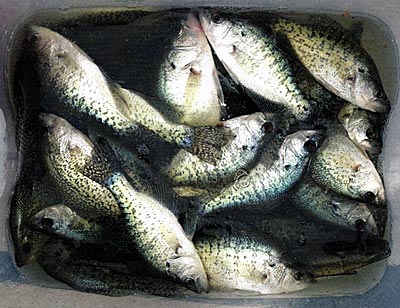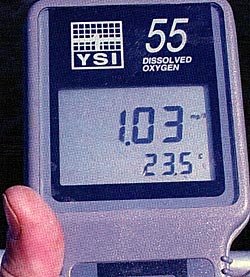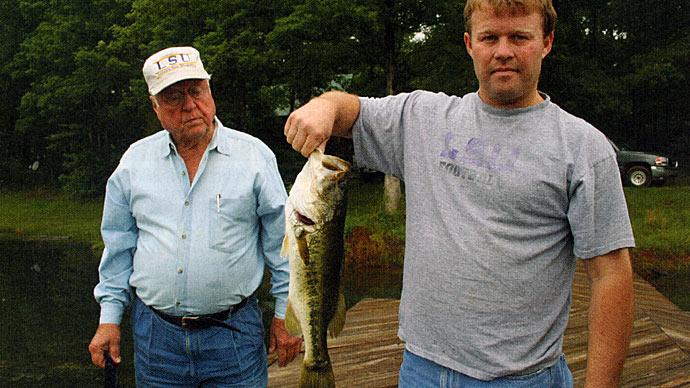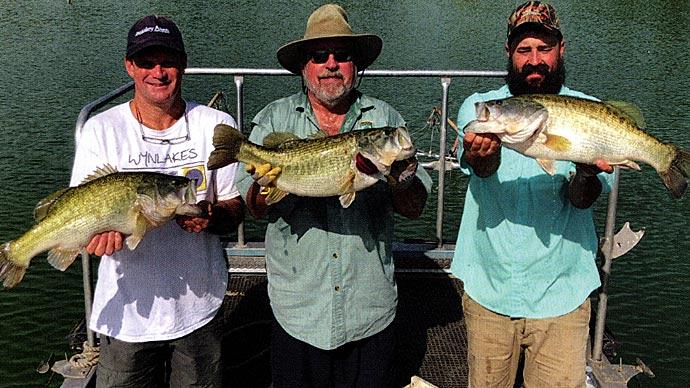
Northern ponds seem to safely support an average of 300-350 pounds of fish-per-acre. Think about that. A good guess is that 35-50 of those pounds are the top end predator fish. The rest are various sizes and age classes of forage fish and other target species, especially sunfish.
In today's world, keeping in mind the influence of northern climates, you have a variety of choices of fish to populate your favorite fishing hole. A big part of your job is to learn the consequences of your choices. That means understanding the reproductive rates of the different species you're considering. It also means having a good idea of expected growth rates.
Then, you can project the carrying capacity of your pond. That's where those 300-350 pounds of fish come into play.
If size matters, then so do numbers. Fewer fish means bigger fish. Bigger fish often means lower catch rates. Your management strategy influences productivity as well as size.
Fertilization of northern ponds is strongly discouraged, simply because higher productivity pushes a pond toward the edge of susceptibility to winterkill.
So, think about the seasons as you manage your pond.
Spring is when fish spawn. Survival rates are determined by spawning substrate as well as adequate food sources for newly hatched fry. Throw in the dynamics of the predator/prey relationships and you have a recipe for success—if you pay attention to a reasonable production plan and give thought to a good harvest strategy.
In northern waters, harvest is probably the most important part of this strategy. Take too many fish and those remaining can overwhelm the fishery. Harvest too many predators and expect to see an increase in numbers of forage fish, with limited growth rates. Take too many forage fish, such as sunfish, and watch your game fish start losing weight.
So, choosing your management strategy will have an impact on that fishery. Specifically, do you intend to have a supplemental feeding program? Manage nutrients for a plankton bloom as fish are spawning? Cull some fish through the warmest months?
Think about those things with a sharp focus on the possibility of winterkill. Too many nutrients, coupled with a big standing crop of fish, and the risk of winterkill rises.
That's a big reason to consider aeration. Move that water so it can do what water does best, namely interface with air to cleanse itself. For northern waters, that's a big deal.
With northern seasons, short spring, short summer, short fall, and longgg winter, what you do during those shorter seasons influences the outcome of what happens during the winter months.

Manage spring and early summer months to maximize spawning, especially those key forage fish species. That means providing what those species need such as sunfish beds, substrate for minnows to attach eggs, and just the right amount of cover for young fish to be able to hide and graze. It also means having a minimal to moderate plankton bloom. Specifically, if visibility hovers around 24-30 inches, then you can feed some babies. Plan for late spring, all summer, and all fall months for productivity and growth of your fish. If feeding is an option, use the best feed to accomplish your goals. If a goal is rapid growth, feed a high protein, highly digestible feed. If you do that, conversion rates are significantly higher than most of the grain-based feeds. That's important to you because the more feed converted to fish means less waste byproducts to influence water quality. Keep that in mind, because if there are more free nutrients in your water that can be converted to algae or plants, you increase the risk of winterkill. What you do during the three warm seasons has a direct impact on the winter months your pond is under ice.
Aeration needs to start once water temperatures rise into the low 60's. If you intend to push the productivity, the cost of buying and running an aeration system far offsets recovering from even one fish kill.
From the mid-summer months, through the fall, and even during ice-fishing, think harvest. Once a northern pond rolls into its fourth or fifth year, expect to see a bounty. Based on your goals, selectively harvest fish. If you want to strive for a balanced fishery, harvest a balance of fish.
Keep in mind, you'll go into winter with the largest mass offish of the growing year—unless you've selectively harvested some fish.
Here's the biggest tip of this article. Manage each productive season toward the end gain of coming out of winter with a healthy fishery.
Manage nutrients, aerate if you can, have a reasonable harvest plan—those are some tips for managing seasons for a predator/prey relationship strategy in northern waters.
Here's the bottom line. Keep water moving to cleanse it. Manage nutrient input. Pay attention to aquatic plant growth. Watch your plankton blooms by checking visibility regularly. Understand the dynamics of your different fish species.
If you'll do these fundamental stewardship practices, your odds of having years of fun fishing are really good.
Reprinted with permission from Pond Boss Magazine



